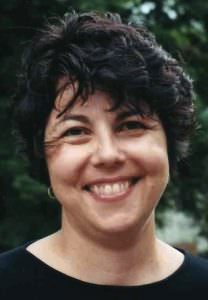How Jackie‘s Editor Helped Show First Lady in Brand New Light
When Chilean director Pablo Larrain chose to make Jackie his first film in English, he invited his frequent collaborator and fellow Chilean Sebastian Sepúlveda to edit the film. That’s little surprise, since Sepúlveda’s work is one of the reasons Larrain’s films are heralded for their distinct mix of the surreal and the politically incisive.
Sepúlveda edited Larrain’s acclaimed The Club (2015), about a secret retirement home in Chile for Catholics priests. And Larrain produced Sepúlveda’s directing debut, The Quispe Girls (2013), based on the true story of three sisters working in isolation as shepherds in the mountains of Chile in 1974. The film won best cinematography at the 2013 Venice Film Festival.
“They are living a nightmare; they are so alone in the mountains. In a ritual way. they hang themselves together,” says Sepúlveda of his film.
He and Larrain brought that same nightmarish, surreal quality to Jackie, which focuses on the few days just before and after the assassination of President John F. Kennedy on November 22, 1963. The film imagines Jackie (Natalie Portman) as she deals with the aftermath of the murder with both pubic and private faces, from washing her husband’s blood from her body to planning his funeral to meeting with a journalist where she shrewdly authors JFK’s, and her own, legacy by appropriating the Camelot myth, thus managing to have the last word.
“Making a tale is a way to overcome trauma. She created a tale to make sense of all of that,” says Sepúlveda. “Life is chaos, a work in progress; you need rituals, you need tales to create a past and sense of your life. To create yourself in a way. She did it for her and for the country, too."
“We worked all the elements of Greek tragedy that this story has. It is a horror movie; that week is a nightmare, a big trauma,” says Sepúlveda. “That’s why Pablo and I discussed, in the editing, a complex structure of four layers: there’s the interview with a journalist; Jackie organizing the funeral arrangements; Pablo added the White House tour; and the conversation with the priest. It was difficult to work with four layers but we approached it like fragmented pieces of memory. The idea was to do an emotional film; not ‘reality’ but to show what she felt; to be in her mind in this moment of trauma,” he says.
At the same time, Sepúlveda says, he wanted to create a “dreamy mood” by quick cuts, to trigger a feeling for the audience of being “in a daze.”
Although Sepúlveda studied history after returning to Chile in 1990 (his family was in exile during Augusto Pinochet’s 17-year dictatorship) his knowledge of Jacqueline Kennedy was limited. “I studied history for four years, so I knew the story and I saw [Oliver Stone’s] JFK film. But I had a light idea of [Jackie] that was like a mannequin, a crystal bouquet,” says Sepúlveda. He says in every other film in which Jackie in a character, “they don’t talk about the essential problem of the human being. With [Jackie], you enter in a zone and a tale that talks about grief, a film about a queen without a crown.”
Larrain, says Sepúlveda, approached his subject with few preconceptions, “less baked-in knowledge,” he says. “That allowed me to ask interesting questions and [we] approached the story from a humanistic perspective of a 34-year-old woman, wife and mother.”
https://www.youtube.com/watch?v=e9CrQ8OdTpg
Sepúlveda says he and Larrain, as they’ve done on other films, worked closely in the editing room to create visuals for Jackie that result in a mood and a tone that’s both piercing and melancholy. “He has a strong vision and he likes not to simplify the stories,” says Sepúlveda. “He does not play it safe when he works. Pablo creates a lab in the editing. We don’t know how we’re going to construct and then we get to work. It’s a more French way to work.” If that seems stressful, it’s also exhilarating. “That’s why I chose this; not a financier or a banker,” says Sepúlveda.
One of the crucial discussions was how to shoot and edit the assassination itself. As with everything else in the film, it had to be from Jackie’s point of view. “You have the Zapruder film, which we’ve all seen,” says Sepúlveda. “Oliver Stone used that, those same images. Pablo had the idea that in order to understand what Jackie went through, we had to see what the thing was that she experienced at that moment.”
Other images in the film, which Larrain shot in 16mm, were also reconstructed so they were unexpected and less familiar. “We were always looking for the different angle. We didn’t want the icon, so the idea was to find new images,” he says. There’s no “John-John” saluting his father’s casket, for instance. Instead, we glimpse the little boy peering from a car window at the funeral procession.
“That shot is awesome. I called Pablo in to see that take and we both were like, ‘Wow, that’s incredible,’” says Sepúlveda. “The best part of shooting in 16 millimeter [film instead of instant video] is you have those beautiful surprises.”



